
Fun in the Sun: Water Activities and Games for You and Your Dog
This blog is your go-to guide for making the most out of the sunny weather while bonding with your furry friend. The warmth of the
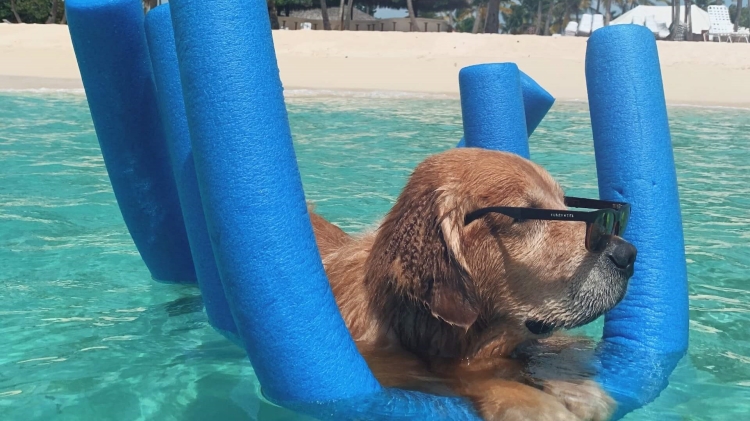
Does your dog love splashing in puddles and outdoor hose water? Do they try to jump in with you during bath time?
Many dogs are naturally drawn to water but need some training to develop the skill and confidence to swim safely.
If you want to introduce your water-loving pup to the joys and health benefits of swimming, read on for helpful training tips for first-time doggie paddlers!
Don’t expect your dog to swim laps their very first time in a pool or lake. Start in shallow water just a few inches deep to help your dog grow comfortable with the sensations and buoyancy of water.
Begin water exposure and training in familiar environments your dog already feels secure in, like your backyard kiddie pool or bathtub. Being in unfamiliar places adds stress and fear.
Let your dog explore walking through shallow water getting their paws and belly wet. Splash a little water on them. Make this first introduction fun and rewarding. Give praise and treats for any interaction with the water.
Encourage your dog to venture in by throwing your favorite toys just a foot or two into the shallow end and praising as they retrieve them. Start with sinks or tubs indoors if needed. Repeat luring with toys a little deeper as they progress.
Give treats, pets, and praise for any effort to engage with the water, no matter how small. This motivates your dog to try more. The reward is just putting one paw in, then two paws, then four paws, etc.
It may take multiple short sessions before your dog is ready for more than just wading. Be patient and let them set the pace. Forcing it creates fear. Give them time to gain confidence and comfort.
Provide physical support to help your dog learn buoyancy and paddling skills without overwhelming them:
Dog life jackets give buoyancy during early lessons, allowing dogs to focus on paddling motions instead of staying afloat. Look for Coast Guard-approved vests that fit your dog’s body size.
Gently hold your hand under your dog’s belly as they float to give security while preventing sinking. Do this in intervals, gradually reducing support as they learn to stay buoyant.
Let your dog bite onto a pool noodle as they swim. The noodle helps them stay afloat while giving them an object to focus on. It provides both physical support and psychological comfort.
Pools with built-in benches let short or vertically challenged dogs stand securely with their heads above water as they gain confidence. Slowly coax them off the bench to try swimming as their skills improve.
Place a floating foam platform just under the water’s surface so your dog has a stable surface to stand on when first venturing into deeper water before swimming.
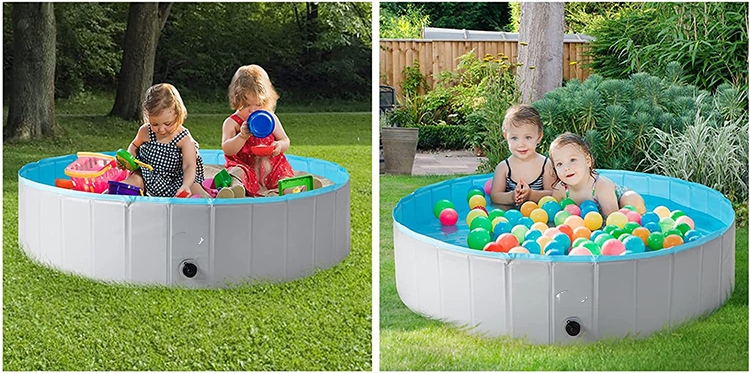
Once your dog can remain buoyant with support devices, begin actively training the motions of swimming:
Say “paddle” and gently splash water toward their front feet to trigger the instinct to start paddling. Offer treats when they successfully paddle. Use a target stick to guide them.
Say “kick” and tickle your dog’s rear haunch area or tail to encourage rear leg kicking that propels them forward. Couple with front paddling. Try doing this in shallow water first.
Blow in your dog’s face as they float to remind them to breathe out underwater. Time your breaths to find a gentle swimming rhythm. Practice in short intervals.
Teach your dog how to lift up and turn their head to take breaths without sinking their body by demonstrating with treats and guiding with your hands. Mark and reward proper head turns.
Some dogs may progress to alternate side front leg strokes. Lure side-to-side with toys. But a basic doggy paddle is fine for most casual swimmers. Don’t worry about perfect form.
Dogs need to learn how to safely exit the water. Teach them to swim on stairs, ladders, or lifts. You may need to guide them physically the first few times.
Incorporating play into training keeps it positive. Use toys to encourage swimming practice:
Throw toys into the water just out of reach so your dog has to swim a short distance and back to retrieve it. Gradually distance tosses as skills improve. Floating toys are the easiest to spot.
Walk or paddle away encouraging your dog to follow you through the water to a toy “prize” waiting on the other side. Call their name excitedly to motivate the following.
Hide sinking or floating toys at various depths and locations in the pool and coax your dog to “find” them using their nose and swimming skills. Start with just one toy in shallow water.
For advanced swimmers, dive rings or balls to the bottom of the pool and see if your dog can dive down and rescue the “sunken treasure” to earn treats above. Only do this once your dog has mastered the basics.
Remember that swimming skills take time and practice to develop. Build up your dog’s abilities bit by bit:
Start with just 2-3 minute sessions. As your dog masters skills, gradually increase time in the water to 5-10 minute sessions, then longer as their stamina increases. Gauge your dog’s energy level.
Begin luring your dog just a foot or two through the water. With practice over multiple sessions, coax them to swim greater distances between you, toys, or from shallow to deeper ends.
Watch for signs of fatigue like lagging or doggy paddling vertically. End sessions before your dog is fully exhausted to avoid negative experiences. Learning should be fun, not frustrating.
Build from shallow wading to swimming with support devices to swimming short distances solo to deeper water and more advanced skills. Master each step fully before advancing, so your dog gains confidence.
Daily short practice sessions of 3-5 minutes are more effective for muscle memory than one long session per week. Work swimming into your exercise routine.
While learning to swim is fun for dogs, safety should always be your top priority during training:
Never leave your dog unattended in or near a pool, lake, pond or other body of water. Active supervision is essential, even for dogs who can swim.
Keep a flotation device, rope, or safety hook in hand near the water in case your dog gets into trouble and needs assistance exiting. React quickly if your dog struggles.
Watch for signs of fear, reluctance to enter the water, panic, or exhaustion during lessons. End sessions immediately if your dog exhibits any of these behaviors.
Have your dog take frequent breaks during lessons to rehydrate and rest. Overdoing it can lead to drowning risks or health impacts like hypothermia or exhaustion.
Make sure any flotation vests or other buoyancy aids fit your dog properly and are in good condition. Improper fit can cause accidents. Refasten if needed.
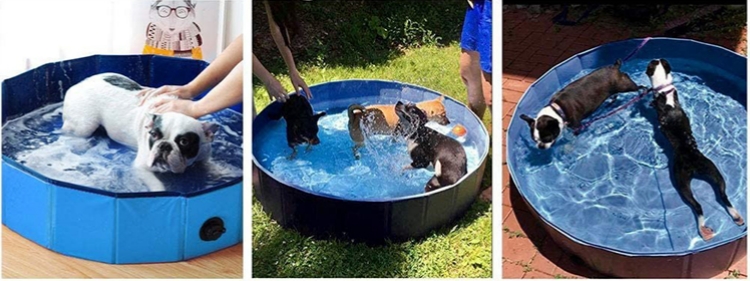
Try to minimize other people, dogs, or loud noises during training that may startle your dog and compromise their focus. Keep lessons calm.
Always finish training sessions while your dog still wants more to build their confidence for next time:
Call it quits while your dog still has moderate energy left. This prevents frustration and avoids associations between swimming and feeling exhausted. Learning feels rewarding.
If your dog seems reluctant or afraid, stop the session. Pushing too far can create lifelong fear and resistance around water. Wait and try again another day starting smaller.
No matter how short the lesson, finish by praising your dog and offering treats for their efforts so they feel rewarded. This motivates them to train again. Give praise throughout the session too.
Lessons should get slightly harder each time in small increments. Wait until your dog masters a skill completely before increasing difficulty to set it up for ongoing success. Go at their pace.
If your dog is struggling with a skill, go back to an earlier stage for review. Practice previously mastered skills to help rebuild confidence before attempting new challenges.
With the right motivation tools, progress pacing, and safety practices, you can help even water-shy dogs overcome fears and learn to happily swim and reap the many benefits water exercise offers.
Remember that each dog learns at their own speed. Remain patient and let your pup set the training pace. Maintain an encouraging, rewarding approach and soon you’ll have a skilled swimming companion ready to dive in and make a splash!
Teaching a dog to swim for the first time is an exciting endeavor, but one that also comes with many questions for new swim instructors. Here are answers to some frequently asked questions:
You can begin introducing puppies to water gently at 6-8 weeks old. But structured swimming lessons should wait until about 6-9 months old when coordination improves. Always supervise closely regardless of age.
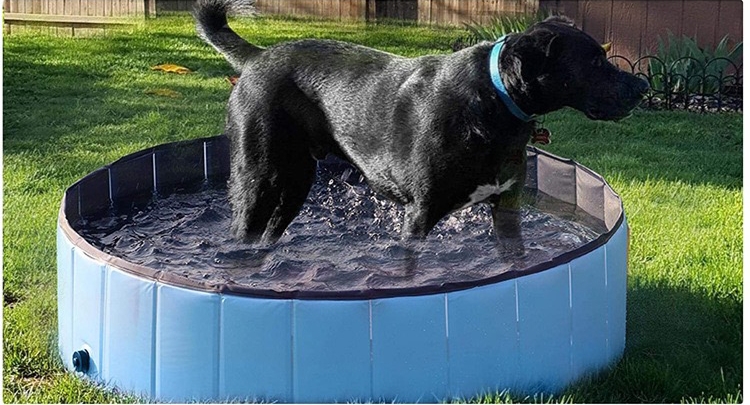
Start in calm, confined spaces like baths, sinks, or backyard portable pools. Lakes, beaches, and pools have more variables, so introduce these later once your dog has mastered the basics.
Early training sessions should be just 3-5 minutes long. Even once skills improve, limit swims to 15-20 minutes at most with frequent breaks to prevent overexertion. Learning occurs in short bursts.
Aim for short 3-5 minute training sessions 3-5 days per week. Daily practice allows skills to solidify and muscle strength to develop. Take a day off here and there for rest.
Have on-hand flotation vests, underwater benches or steps, floating toys, towels, treats, a scoring pole, and a safety hook. Optional items include goggles for dogs and floating platforms.
Go extremely slowly, rewarding all interactions, no matter how small. Don’t force it. Try luring with toys and implementing support devices. Stop immediately if your dog resists or panics. Let them gain comfort at their own pace.
Wait until your dog demonstrates complete mastery and confidence with a skill before progressing to the next level of difficulty. Rushing training overwhelms dogs and sets them up to fail, undermining progress.
Watch for panicking, clinging to you, fighting restraints or support devices, refusing to enter the water, ears back, tail down, or other fearful body language. End sessions immediately if you observe any distress.
Never! It takes just seconds for an accident to occur. Always directly supervise your dog any time they are in or near water, even if they are a capable swimmer and wear a flotation device.
With patience, safety precautions and realistic expectations, you can guide even reluctant dogs into becoming proficient, happy swimmers able to reap the many benefits water exercise provides!


This blog is your go-to guide for making the most out of the sunny weather while bonding with your furry friend. The warmth of the
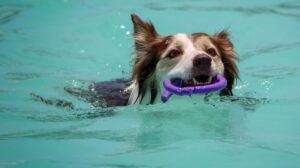
Installing a pool in your backyard for your furry friend to splash around in is an exciting project. But before you let your dog take

Installing a pool in your backyard for your dog to swim and cool off in is a big investment. To maximize safety and enjoyment, you’ll
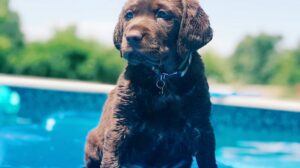
This blog is your ultimate guide to understanding how this fun and refreshing activity can significantly improve your furry friend’s overall well-being. Just like humans,

This blog is your go-to guide for making the most out of the sunny weather while bonding with your furry friend. The warmth of the
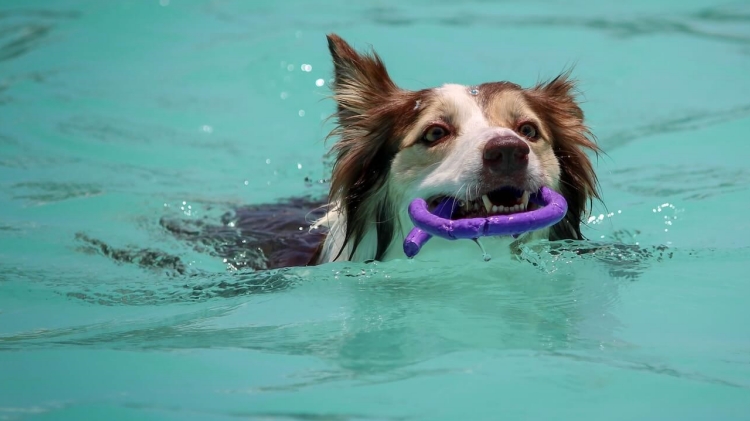
Installing a pool in your backyard for your furry friend to splash around in is an exciting project. But before you let your dog take
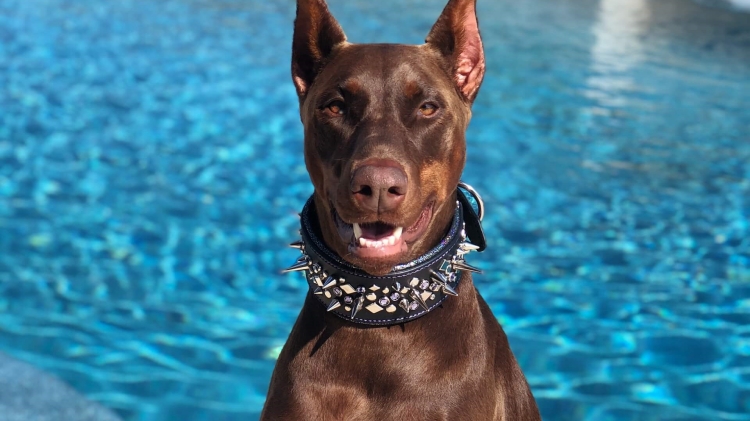
Installing a pool in your backyard for your dog to swim and cool off in is a big investment. To maximize safety and enjoyment, you’ll

Does your dog love splashing in puddles and outdoor hose water? Do they try to jump in with you during bath time? Many dogs are
Copyright © 2024 foldabledogpools. All Rights Reserved.